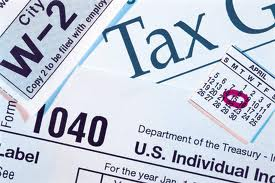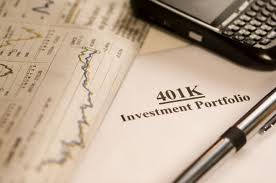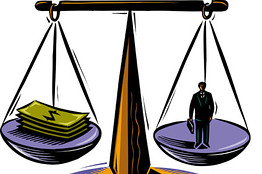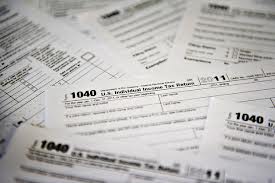The goal of every taxpayer is to make sure the Internal Revenue Service gets as little as possible, right? You mean the IRS isn’t a Charitable Foundation? I’d be a serious philanthropist if that was true! So you need to take every tax deduction, credit or other income adjustment you can.
Here are 10 tax breaks — some for itemizers only, others that any filer can claim — that often get overlooked but could save you some tax dollars.
1. Additional charitable gifts
Everyone remembers to count the monetary gifts they make to their favorite charities. But expenses incurred while doing charitable work often aren’t counted on tax returns.
You can’t deduct the value of your time spent volunteering, but if you buy supplies for a group, the cost of that material is deductible. Similarly, if you wear a uniform in doing your good deeds, for example as a hospital volunteer or youth group leader, the costs of that apparel and any cleaning bills also can be counted as charitable donations.
So can the use of your vehicle for charitable purposes, such as delivering meals to the homebound in your community or taking the Boy Scouts or Girls Scouts troop on an outing. The IRS will let you deduct that travel at 14 cents per mile.
2. Moving expenses
Most taxpayers know they can write off many moving expenses when they relocate to take another job. But what about your first job? Yes, the IRS allows this write-off then, too. A recent college graduate who gets a first job at a distance from where he or she has been living is eligible for this tax break.
3. Job hunting costs
While college students can’t deduct the costs of hunting for that new job across the country, already-employed workers can. Costs associated with looking for a new job in your present occupation, including fees for resume preparation and employment of outplacement agencies, are deductible as long as you itemize. The one downside here is that these costs, along with other miscellaneous itemized expenses, must exceed 2 percent of your adjusted gross income before they produce any tax savings. But the phone calls, employment agency fees and resume printing costs might be enough to get you over that income threshold.
4. Military reservists’ travel expenses
Members of the military reserve forces and National Guard who travel more than 100 miles and stay overnight for the training exercises can deduct related expenses. This includes the cost of lodging and half the cost of meals. If you drive to the training, be sure to track your miles. You can deduct them on your 2012 return at 55.5 cents per mile, along with any parking or toll fees for driving your own car. You get this deduction whether or not you itemize, but you will have to fill out Form 2106.
5. Child, and more, care credit
Millions of parents claim the child and dependent care credit each year to help cover the costs of after-school day care while Mom and Dad work. But some parents overlook claiming the tax credit for child care costs during the summer. This tax break also applies to summer day camp costs. The key here is that the camp is a day-only getaway that supervises the child while the parents work. You can’t claim overnight camp costs.
Remember, too, the dual nature of the credit’s name: child and dependent. If you have an adult dependent who needs care so that you can work, those expenses can be claimed under this tax credit.
6. Mortgage refinance points
When you buy a house, you get to deduct the points paid on the loan on your tax return for that year of purchase. But if you refinance your home loan, you might be able to deduct those points, too, as long as you use refinanced mortgage proceeds to improve your principal residence.
7. Many medical costs
Taxpayers who itemize deductions know how difficult it often is to reach the 7.5 percent of adjusted gross income threshold required before you can claim any medical expenses. It might be easier to clear that earnings hurdle if you look at miscellaneous medical costs. Some of these include travel expenses to and from medical treatments, insurance premiums you pay for from already-taxed income and even alcohol- or drug-abuse treatments.
These added medical expenses will be even more valuable on your 2013 tax return. Beginning this tax year, a health care reform act provision now requires you have medical expenses of more than 10 percent of your adjusted gross income before you can deduct them.
Self-employed taxpayers who are not covered by any other employer-paid plan, for example, one carried by a spouse, can deduct 100 percent of health insurance premiums as an adjustment to income in the section at the bottom of Page 1 of Form 1040.
8. Retirement tax savings
The retirement savings contribution credit was created to give moderate- and low-income taxpayers an incentive to save. When you contribute to a retirement account, either an individual retirement account (traditional or Roth) or a workplace plan, you can get a tax savings for up to 50 percent of the first $2,000 you put into such accounts. This means you get a $1,000 tax credit, which is a tax break that directly reduces dollar for dollar any tax you owe.
9. Educational expenses
The Internal Revenue Code offers many tax-saving options for individuals who want to further their education. The tuition and fees deduction can help you take up to $4,000 off your taxable income and is available without having to itemize.
The lifetime learning credit could provide some students (or their parents) up to a $2,000 credit.
Don’t forget the American opportunity tax credit, which offers a dollar-for-dollar tax break of up to $2,500. This education tax break was created as part of the 2009 stimulus package as a short-term replacement for the Hope tax credit, and was extended through tax year 2017 as part of the American Taxpayer Relief Act of 2012, also known as the “fiscal cliff” tax bill.
10. Energy-efficient home improvements
Generous tax breaks for for energy-efficient home improvements expired at the end of 2010, but some homeowners still might be able to pocket a tax credit of up to $500 on their 2012 and 2013 returns, again thanks to a provision in the fiscal cliff bill, for a few common residential energy upgrades.
The bad news is that the tax credit is just a third of what was previously available. You also now must pay attention to specific spending limits, such as $150 for high-efficiency furnaces and boilers, $300 for air conditioners and heat pumps and $200 for replacement windows. And the overall $500 tax credit cap applies to anyone who received any previous energy tax credit since Jan. 1, 2005.
But if you qualify, the tax break is a tax credit, giving you a dollar-for-dollar reduction of your tax bill. And when it comes to taxes, every dollar saved helps.
The information herein contained does not constitute tax or legal advice. Any decisions or actions based on information contained herein should not be made without first consulting a CPA or attorney.
For more information contact Compass Asset Management Group, LLC at 845.563.0537 or Contact@CompassAMG.com
The author of this blog, Steven M DiGregorio is President of Compass Asset Management Group, LLC and an Investment Advisor Representative with Spire Wealth Management, LLC a Federally Registered Investment Advisory Firm. Securities offered through an affiliated company Spire Securities, LLC a Registered Broker/Dealer and member FINRA/SIPC.






















